In this episode, Steve Sears and Steve Sosnick analyze the market’s reaction to President Trump’s recent tariff announcements and the ensuing volatility. They discuss the implications for investors, the potential for a bear market, and strategies to navigate the current economic landscape.
Summary – IBKR Podcasts Ep. 232
The following is a summary of a live audio recording and may contain errors in spelling or grammar. Although IBKR has edited for clarity no material changes have been made.
Andrew Wilkinson
Welcome, everybody, to this week’s podcast. My name is Andrew Wilkinson. Joining me today is Steve Sears, columnist at Barron’s, where he pens The Striking Price. Welcome, Steve. How are you?
Steve Sears
Great to be with you, Andrew.
Andrew Wilkinson
Investing’s never easy, but post-election, there was a significant groundswell of optimism that tax cuts and deregulation would sustain a rally in U.S. equities. However, despite that strong start to the year, the selling has been mounting.
Let’s start with Steve Sosnick, who used to remind me that under Trump 1.0, the biggest overnight fear he faced was so-called “tweet risk” at the time. Steve, admittedly, it’s very early in the Trump 2.0 administration, but why are there cracks in the so-called “Trump trade,” and how serious are they?
Steve Sosnick
Andrew, for starters, I think the markets just got ahead of themselves. We were in this huge momentum-driven rally pretty much since October–November ’22, and so the election occurred really as that rally was in full force. And so, it was just an accelerant to the rally.
And I think instead of just following the trend higher, we accelerated the trend to a new level. And I think we’re just falling back into place because a lot of the stuff that the market viewed as priorities—things they thought the administration would view as a priority—have not necessarily been the same as the market’s priorities.
So, it’s a little bit of impatience. Now, to be fair, we’re about, what, six weeks—six or seven weeks in? We’re not even halfway through the first hundred days, but it’s pretty clear that there are other things on the administration’s mind, at least in the initial phase, and I think a lot of it is considered disruptive.
One of the goals was to bring the financial house into better order. And certainly, there’s been a lot of cutting at the government spending level. But it seems to be done with a chainsaw—the Elon Musk metaphor—rather than with a scalpel. I think that has the market a little unsettled.
I think the budget talks, at least initially, do have the tax cuts that everybody’s hoping for, but they undermine the idea of rationalizing the government’s balance sheet because the tax cuts may outweigh any potential savings from spending.
And of course, you get the back and forth with tariffs. We’re taping this on Monday, the 3rd. The tariffs are supposed to go into full effect tomorrow, the 4th. They may or may not get held up, and I think that’s a big question.
I was just asked: why is the market not reacting worse to the tariffs? And that is because I think it’s very much a wait-and-see. We’ll see whether they get implemented tomorrow morning, whether they get implemented after the speech to Congress. Again, remember that we’re taping this on Monday, the 3rd, with the big speech happening and the tariff implementation all scheduled for the 4th.
Andrew Wilkinson
I see you nodding in the background there as Steve Sosnick is talking. You’ve written and watched many bull and bear markets. Who’s currently in control?
Steve Sears
Neither the bulls nor the bears—it’s President Trump.
As Steve said, to maybe bring it to a slightly sharper point: intellectually and ethically, the way Trump behaves is at odds with the way the Street behaves. Most traders, investors, dealmakers, and deal lawyers are just inclined to do the deal—make a trade.
They’re not necessarily interested in winning at the expense of wiping out the other guy. And so, you’re seeing the tariffs being bandied about as a foreign policy tool. And that foreign policy tool is disrupting the global economic system that’s been in place since World War II—since the ashes of World War II.
And so, I don’t believe the Street has any way of comprehending President Trump’s actions.
One, the Street is generally used to being mollycoddled by world leaders. Trump doesn’t mollycoddle them. In fact, Trump behaves like a New York real estate mogul who is so big and so powerful that he can get whatever he wants at the deal table, and everyone will fall into place.
The Street just isn’t used to anybody acting that way. Sure, we have very tough dealmakers, but even during the toughest negotiation, everyone refers to the climactic moment when it seems that both sides are going to walk away before a deal is reached.
I think Trump is actually willing to walk away from the deal table, and no one’s used to that.
As a result of that, there’s no way to truly understand what he does.
Now, I’ll point this morning to yesterday’s Truth Social post about crypto, right? So this gets to what Steve was saying.
Everybody thought that Trump is a pro-market, pro-crypto president, which, in fact, he actually is—although he hasn’t acted like one recently.
Last night, he says we’re going to put several of these cryptocurrencies in our strategic crypto reserve for the country. What happens? They all surge.
Now they’re giving back some of their gains after the ISM came out with new orders slowing down.
But just as we’re one tweet away from a sell-off, we’re also one tweet away from a huge rally.
And I don’t believe—I’ve never met anybody in the markets who can handle that type of uncertainty.
That’s my longest response to that question.
Andrew Wilkinson
Steve Sosnick, I noticed a subtle change last week following NVIDIA earnings. There was a remarkably muted reaction after hours to earnings, which came in strong.
Steve Sears
And when the market opened on Thursday…
Silence. Silence.
Andrew Wilkinson
How much does artificial intelligence, NVIDIA, and big tech matter to the overall tone? And how much risk are we at for weakening sentiment?
Steve Sosnick
I think we are at risk for weakening sentiment because, really, the whole market is predicated on the AI trade. It may or may not be a coincidence that ChatGPT was released in October ’22, which, by the way, was when the current bull market started. Some of the initial bounce was just that we were oversold, but I think the ensuing rally is very much predicated on artificial intelligence.
And I point back to a piece that I wrote in, I think, February of ’23, where I counted the number of times that Jensen Huang or one of the other NVIDIA executives used the term “artificial intelligence” or “AI” on their earnings call. Memory doesn’t serve me fully, but I think it was 57 times before the first question.
So it’s pretty clear that’s been the focus, and there’s been all this spending. You’ve got billions and billions of dollars in spending. It’s almost like a race to see whether Microsoft can spend more than Alphabet, or more than Amazon or Meta. Meta seems to be winning that race in terms of who can spend the most money.
But I think it’s all sort of self-reinforcing. NVIDIA sells to the other six Magnificent Seven members, and any sort of sign that this is slowing down—or even just that the pace of growth is not exponential anymore, that it might be something linear—will weigh on the whole market.
And the reason it weighs on the whole market, partially, is because of the concentration. When you have Mag 7 plus Broadcom—Grade 8, whatever you want to call it—being roughly a third of the S&P 500, or call it half of the NASDAQ 100, if these stocks fade, there’s not a lot of room to hide.
We are seeing some rotation. The advance-decline on a lot of these sell-offs is not actually all that terrible. They’re not those 3-to-1 kind of days, so there is some rotation going on. But it’s a bit tepid—not enough to offset what just could be some tiredness in these big-cap tech stocks.
Andrew Wilkinson
Steve Sears, I want to take you back to a little chapter—a vignette I remember from your book, The Indomitable Investor, from, I think, 2012. You described the struggle a couple from Brooklyn, New York, had in trying to fire their broker, who was managing their money at the time during the Great Financial Crisis. They managed to do it—they liquidated everything, and I think they even sold their house. Whatever the case, it played out well for them at the time.
But the question I have is this: Is there ever a time for investors to sit out the market?
Steve Sears
I think that’s a great question. I think the answer to it is yes. I think people should be fully invested at all times, but we seem to be living in an era in which people think they must be in perpetual motion and perpetually chasing the hottest stock.
The thing that strikes me as so interesting—and this underscores sentiment and the moves we’re seeing in the marketplace—is that, for the first time that I can recall, the volume and interest in upside options on NVIDIA, or any name you want to pick, oftentimes dwarfs that of the actual stock.
So what happens is you get into an event, and everybody thinks, I’m going to buy calls on it. They have no idea how to actually price the call. They’re used to the stock making a huge move, and when the stock does not make a huge move—as was the case with NVIDIA, for instance—all the options guys freak out.
That creates all sorts of havoc within the trading ecosystem, and it drags the stock down. Now, I don’t believe that type of zeitgeist in the moment is the reason to sell.
That couple I referenced in my book happened to have taken action around the Global Financial Crisis. So they actually timed it pretty well. And, as I understand, afterward, they got in around March of ’09 and rode the thing right back up 100%. And they are still invested.
So I think now, when you’re seeing these things dance about, the other point to consider is that there is sentiment and there’s trading volume—there’s that sort of go mentality.
But at the same time, if you speak to institutional investors, they’ll quickly tell you they’re dismissive of that type of short-term activity. And in fact, earnings are growing.
Last week, earnings were increased for NVIDIA and Broadcom, as well as one other big-cap stock that I can’t remember. And the research that went out from Goldman to clients this morning—or over the weekend, rather—was that, for the first time since late 2004, forward earnings have increased.
And if you speak to institutional investors—perhaps not people who focus on derivatives as much as we do, but pure stock, low-money guys—they’ll tell you: You invest to buy growing earnings, and earnings are growing.
I think it’s incumbent upon investors now to differentiate between short-term momentum, trading volatility, and the go nature of the current options market versus what is actually taking place in these really boring, not-exciting things to discuss, such as earnings, price multiples, and revenue growth.
Steve Sosnick
To build on that point, though, this is where you have to think about the difference between investing and speculation. Right now, you are getting paid to wait for the first time in decades. Everybody’s complaining that rates are too high, but honestly, through most of, let’s say, the nineties, you were talking about rates in the fives, not the fours. So it’s not necessarily too high, and you can get paid to sit on the sidelines if you feel better about it.
I think the bigger risk, though, is how much people are willing to just buy the dips no matter what.
I’m looking—as I’ve noted before, I have very limited insight into what our customers are doing, but that’s for everybody’s protection. However, I do see what our top 25 most active names are on a rolling one-week basis. As of Friday—based on the data I saw this morning, which is through Friday—24 of them were all net to the buy side on the stock side.
And guess what had the biggest buy interest? NVIDIA. I’m sorry—NVIDIA, Tesla, Palantir.
So at some point, as I’ve written about recently, you have to decide if buying a dip is catching a falling knife, and that’s really the issue here. And that goes into the question: Are you investing, or are you trading?
Are you seeing that these things are new values, or are you just reacting reflexively because it’s worked so well for so long? If stock A is down by X percent, does that necessarily mean you should buy more? Because not every dip is a buying opportunity.
And quite frankly, there are times where the trend changes, and you really want to be more aggressive at selling rallies than buying dips.
I don’t know that we’re there yet. I think, to Steve’s earlier point, there’s a little bit of arm wrestling going on as to whether the trend has changed or not. And I think neither side—the bulls nor the bears—is in true control right now.
I do want to get the point across that we see a lot of buying-the-dip activity, and I’m getting the sense it’s more just reflexive.
And we see it every morning.
Unfortunately, we weren’t rolling the tape when we were talking about this earlier, but I think it’s time to bring up the conversation again.
How many mornings would you settle?
I haven’t—I don’t have the number in front of me, but it seems that every morning, the spooze are up 20 or 25 points when the market opens, right? It’s just reflexive.
I’ll wake up and see the spooze—they could be flat. They could be even. They might be up five or 10 points, but pretty much uniformly, by about nine o’clock, they’re up 20 or 25 points.
And that, again, is just doing this trade—doing something because it’s worked. But just because something’s worked doesn’t mean it continues to work.
And that’s something I think we have to be very concerned about in terms of trader behavior as opposed to investor behavior.
Steve Sears
I think, to build upon Steve’s point, this buy-the-dip mentality is probably the greatest risk factor facing the market, and it’s existed for quite some time. Even at the institutional levels, there are all kinds of charts circulating showing the S&P in its channel, as these guys are playing the dips.
At some point, the thing is going to break. It always does.
I obviously don’t know when it’s going to occur, but for now, it seems to be stuck in a very vicious range.
Each morning, as Steve says, you can see the spooze are higher. And at the same time, I’ve been hearing now for the past two months how the institutional community is shorting U.S. equities via the funding markets, the S&P 500 futures, and others.
And that is starting to burn off.
We saw that on Friday, which was a parabolic move higher in U.S. equities. I think the Dow was up 600 points after having been weak.
But today, the old sort of realities assert themselves.
The ISM report came out.
New orders, which are the guts of the index, indicated a contraction.
And so, we’re selling stocks, and we’re going back and forth in this sort of range.
Sooner or later, it’s going to give.
What is the key catalyst?
I would say it’s the president—much more so than anything else that we’re used to analyzing and pushing off of.
Andrew Wilkinson
That’s my last question, really. I’m going to throw this one to Steve Sosnick, and Steve Sears, please feel free to chime in afterward.
Donald Trump has got a proven track record, has he not, Steve, of controlling the narrative? But can he control the impact of the narrative at the end of the day?
Steve Sosnick
They’re both difficult to control.
I will say that the president is, as you say, a master of controlling the narrative, controlling the news flow, and controlling the news cycle. But it does tend to be all about results.
And I think, right now, we’ve been high on drama, certainly, and there have been plenty of very consequential things that have occurred regarding the current administration. But they’re not market-specific right now.
Ultimately, turning around the economy is like turning around a battleship. And we’re an aircraft carrier. It takes time. It’s difficult to do.
Unfortunately, today, as Steve alluded to, this was the latest in a series of potentially stagflationary economic reports. ISM is not necessarily the biggie, but we’ve seen prices paid continue to rise across a wide range of indicators.
We’ve seen consumer sentiment stink—remember, we had two bad Michigan numbers in a row and higher inflationary expectations. Then retail sales were terrible. And then Walmart told you that things are not going so well with their customers.
And that’s even before any tariffs are coming into place.
So, we’re in a more fragile situation than I think a lot of us want to recognize.
And if that is true, the president—no matter how good he is at controlling the narrative or even being able to juggle the economy—ends up being in a very difficult position to manage.
And I think that’s why I get asked the question all the time: Why did the Trump rally fade?
You alluded to it earlier today. And it’s the difficulty in that. I think the vibes are difficult.
Ultimately, I still think, with what’s going on, a lot of people are still wondering about what’s going on with the price of eggs—and that’s really not in the president’s control on a day-to-day basis.
Steve Sears
I agree with Steve, but if the president comes out and says, I’m going to lower income taxes by X percent, or I am going to do something that everybody understands will put money in their wallet, the market’s going to surge in response to it.
Now, the great question is: at what point will the Street start to analyze the impact of it?
I.e., is it inflation? Is it stagflation? I really don’t know.
But I think the guy is a genius at narrative, and you can never underestimate the awesome power of the presidency of the United States.
The Street will do what the Street does—until it doesn’t.
But I think, to quote President Reagan—who, I believe, came up with the Make America Great Again motto initially—we’re in a trust, but verify mode.
And the Street wants to trust him, and they’re looking for verification.
And should the president give them something to verify and mark his policies to market, it’s going to be higher for the indexes and lower for options volatility.
Steve Sosnick
Reagan, by the way, did coin the phrase.
I have a picture from my friend who collects Americana—he has a campaign poster from Reagan saying, Let’s Make America Great Again.
But yes, it was, in fact, Reagan.
And just to your point about income taxes—it depends.
If it’s a very top-heavy income tax cut, I think the bond market freaks out without the public getting too excited.
I think if it’s one of these cuts that affects everybody’s pocketbook, then you might get a bit of a turn.
I think, right now, the bond market has been quite cooperative, but I think that’s more because they’re concerned about the economic message.
And the potential for an economic slowdown leading to interest rate cuts—which, my concern is, they may not come in time.
Steve Sears
Sorry to interrupt. I heard something fascinating at a real estate conference actually, two weeks ago. They were talking about the funding markets, how spreads have come in and normalized, and that even though rates have not returned to their sub-4% level, the markets—the bond markets, the lending markets—are acting as if business conditions are really good.
That is giving the central bank plenty of time to figure things out or to let rates remain at this more normal level.
Steve Sosnick
That’s interesting because one of my contentions is—I was at a conference recently where I was on a panel with another strategist and an economist. And their assertion was that, and it’s not wrong, they were largely going along with the Fed’s idea that the rate regime is relatively tight and restrictive.
Their argument, which is fair, is that from a real-rate point of view, rates are relatively elevated.
Now, again, I’ll argue that historically—long-term historically—we’re not that elevated. But short-term history? Yes, we’re quite elevated, and therefore we are somewhat restrictive.
On the other hand, what in the real world is telling us that things are restrictive?
It’s certainly not credit spreads.
It’s certainly not enthusiasm in the stock market.
It’s certainly not risk assets.
The recent dip in crypto notwithstanding—which reversed a certain amount after the president’s comments about the strategic crypto reserve—ultimately, there is plenty of money sloshing around doing risky things.
And therefore, that tells me that, from an on-the-ground point of view, it’s not that restrictive. And that’s what—
Steve Sears
But not always risky!
Steve Sosnick
No, but that’s what made ‘24 such a great market environment—because we had a good economy. There was a lot of stimulus, which is getting withdrawn pretty quickly.
But you have the G in GDP go up—the government part of it. That’s now going in retrograde.
But in general, the economy is still humming along quite well.
It isn’t all risk, but in ‘24, you had a strong economy, improving inflation, and a Fed that was willing to cut rates.
That’s nirvana for a stock market.
It’s hard to imagine all those conditions being in place in 2025—which doesn’t mean head for the exits, but it does mean maybe you don’t want to just put your blinders on and buy everything all the time just because you see an opportunity when there’s a slight dip.
Steve Sears
I’ve got to tell you, if you’re comfortable with puts and calls, I can’t think of a better time to trade puts and calls on these names. It’s a true trading market.
That said, the one thing I find myself thinking about a lot is: What if they’re playing a different game than we’re used to?
And what if this idea of the strategic crypto reserve has much broader policy implications—changes embedded in it that have been discussed or that we’ve contemplated?
For instance, could we ever see a time when the 10-year U.S. government debt is not as important, and maybe Bitcoin becomes more important?
Steve Sosnick
Scott Bessent just told us that they’re focused on the 10-year—not the stock market, let alone crypto.
I’m not dismissing this.
Maybe there is some sort of three-dimensional chess—or four-dimensional chess—that we’re not picking up on, and that’s entirely possible.
But part of the reason for the market rally was that everybody expected this administration to be focused on the stock market.
And meanwhile, you had the Treasury Secretary come out and go, Eh, not so fast. We’re going to focus—
Steve Sears
But the Treasury Secretary may not have gotten the memo.
Steve Sosnick
Possible. Yeah, it’s possible. Hard to imagine, but possible.
Steve Sears
But it was also hard for me to imagine that a guy who managed a billion dollars—which is by no means a large hedge fund—would be tapped for Treasury.
Trump’s cabinet secretaries largely seem to be guys and girls who carry his wood and water.
And Trump thinks about what he does, then tells them what to do—or fires them.
Steve Sosnick
Which, to some extent, is why Bessent is where he is—because he was one of the more vocal Wall Street people.
He and Howard Lutnick were two of the most vocal Wall Street people—not necessarily the biggest funders, but certainly the most vocal.
And that is, to a large extent, why they’re in the prominent positions they’re in right now.
But I do find it hard to believe—yes, the policies, the rug could easily shift under them.
But the whole tectonics of what’s going on could change, because the president is known to be fairly mercurial.
But I think, as of now, to say that the Treasury Secretary hasn’t gotten the memo—that might be a bit of a stretch.
Steve Sears
I will stick by it. It is not a stretch at all.
And it’s just something that I found myself thinking about.
If you think about what could be one of the greatest ways to put your name down in history, it would be to create an international currency.
And I think that Trump is probably thinking that way.
And I think that poses a potential shift.
We’re not there yet. Obviously, it’s trust, but verify still, but it’s just something I find myself thinking about.
Andrew Wilkinson
We’ll be talking about—not the next one, but certainly in the future—10-year issuance in Bitcoin?
Steve Sosnick
Stranger things have happened, and you have the background in that.
The thing is, they can actually have the strategic crypto reserve without actually doing anything because there’s, I think, $17 billion in seized crypto sitting on the Treasury’s balance sheet.
So there’s your reserve right now.
And so, in many ways, rhetoric could be used to mollify the crypto community, which was a very strong backer of Trump’s campaign.
Steve Sosnick
Because ultimately, again, how much of our tax dollars are going to be spent just to buy risky assets?
That’s not necessarily fitting with a government that’s into austerity.
On the other hand, if you say, Okay, we’ve got $17 billion, we may add or subtract from it, maybe we do monetize it,—the reserve may be in place.
Which is why, as we’re speaking—again, Monday the 3rd—Bitcoin has actually dipped back below $90,000, literally while we’re on this call.
So I think some of the crypto enthusiasm may have faded because that may be what the government ends up doing.
Steve Sears
I think a lot of the daily peregrinations of Bitcoin and anything else reflect this whole momentum trading activity.
And I remember being told years ago that LIBOR was preferred to our U.S. interest rates because it was thought to be less subject to political manipulation.
And of course, we all know what happened with LIBOR.
Now, if you set up something with Bitcoin or crypto, who knows?
And I’m really just going slightly out on a trust, but verify tangent, but it’s just something I keep thinking about—because I don’t think that we in the markets have a true angle on what Trump’s ultimate game is.
I think, if anything, he’s made volatility great again—
Steve Sosnick
Literally going—
I was literally going to say that. You were leading right into that, and I was like, Okay, there we go.
I had it teed up.
Steve Sears
And I was just—just trade it, own it, own stocks, trade volatility.
Okay.
And just see what happens.
I think we’re on the cusp of a new opportunistic era.
Andrew Wilkinson
Brilliant.
Thank you to both my guests today—Steve Sears, columnist at Barron’s, author of The Striking Price, and Steve Sosnick, Chief Market Strategist at Interactive Brokers.
Thanks to you both, gentlemen.
Steve Sosnick
Thank you so much, guys. Take care.
Andrew Wilkinson
And don’t forget—if you enjoyed today’s edition, don’t forget to subscribe wherever you download your podcasts from.
Bye for now.
Disclosure: Interactive Brokers
The analysis in this material is provided for information only and is not and should not be construed as an offer to sell or the solicitation of an offer to buy any security. To the extent that this material discusses general market activity, industry or sector trends or other broad-based economic or political conditions, it should not be construed as research or investment advice. To the extent that it includes references to specific securities, commodities, currencies, or other instruments, those references do not constitute a recommendation by IBKR to buy, sell or hold such investments. This material does not and is not intended to take into account the particular financial conditions, investment objectives or requirements of individual customers. Before acting on this material, you should consider whether it is suitable for your particular circumstances and, as necessary, seek professional advice.
The views and opinions expressed herein are those of the author and do not necessarily reflect the views of Interactive Brokers, its affiliates, or its employees.
Disclosure: Options Trading
Options involve risk and are not suitable for all investors. For information on the uses and risks of options, you can obtain a copy of the Options Clearing Corporation risk disclosure document titled Characteristics and Risks of Standardized Options by going to the following link ibkr.com/occ. Multiple leg strategies, including spreads, will incur multiple transaction costs.
Disclosure: Digital Assets
Trading in digital assets, including cryptocurrencies, is especially risky and is only for individuals with a high risk tolerance and the financial ability to sustain losses. Eligibility to trade in digital asset products may vary based on jurisdiction.
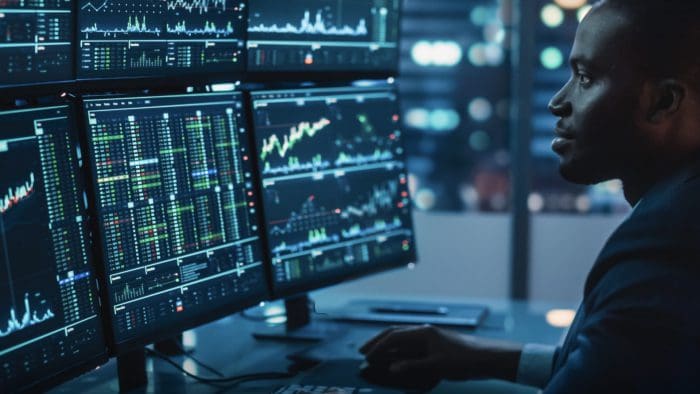
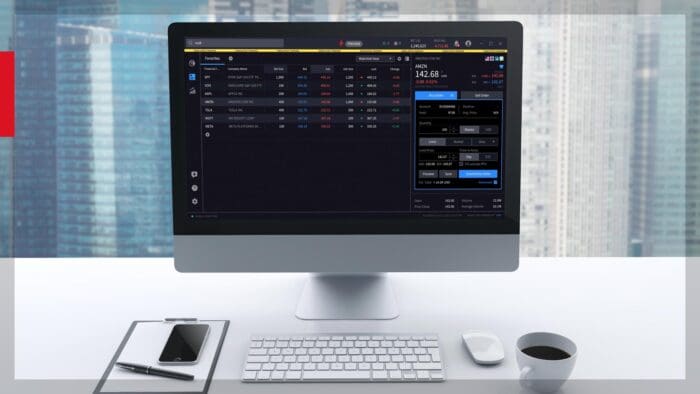


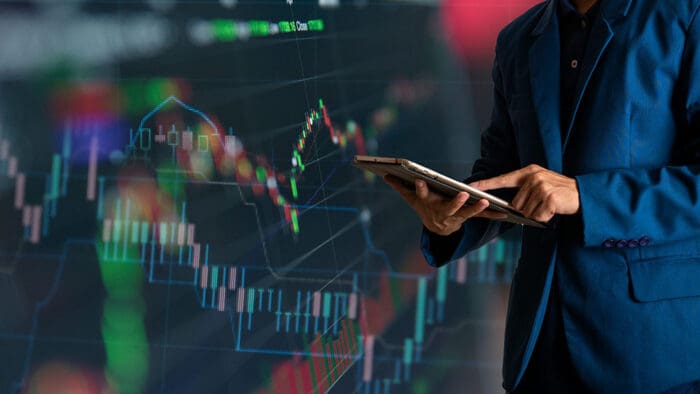

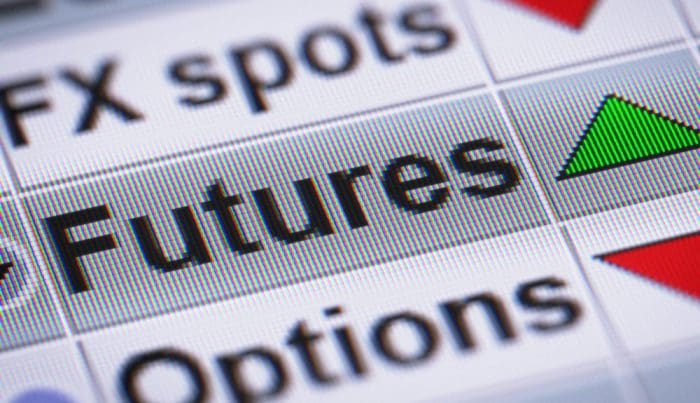




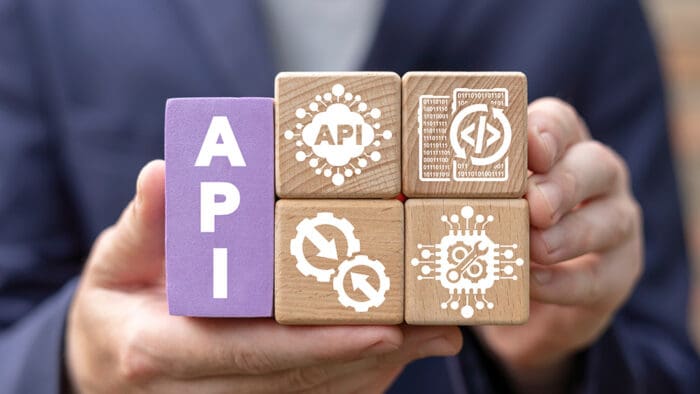

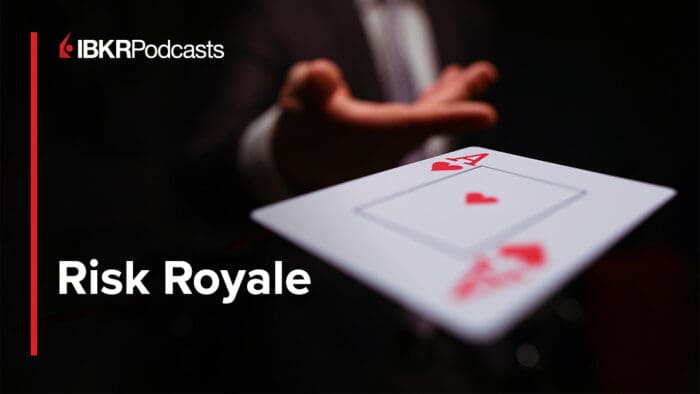




Join The Conversation
For specific platform feedback and suggestions, please submit it directly to our team using these instructions.
If you have an account-specific question or concern, please reach out to Client Services.
We encourage you to look through our FAQs before posting. Your question may already be covered!